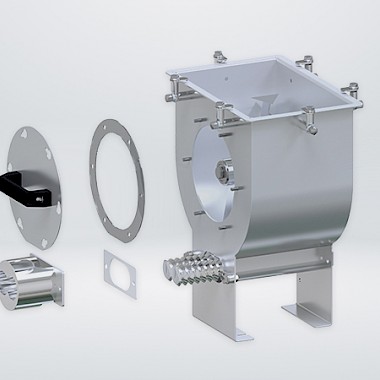Retrofitting: new from old
Kubota Brabender Technologie feeders are robust and can take quite a bit of mechanical punishment. They still function defect-free after many years, even decades in service. But feeders sometimes need to be overhauled and reconditioned or their control systems have to be upgraded. Such retrofits give feeders a second lease of life.
Rapid technological progress in electronics also has an impact on the control systems of feeders. That is why upgrades may be necessary during the course of their – thoroughly long – service lives. A change in production processes may also require an overhaul. A retrofit order of this kind is a job for the “Retrofit” team. It is familiar with every feeder and control system, and knows how these old gems need to be maintained, repaired and commissioned.
Compared to buying new equipment, a retrofit costs only half as much, it cuts delivery lead times for spare parts significantly, increases production reliability and provides the customer with a high-end, state-of-the-art control system.Michael Katzbach, Head of the Spare Parts department at Kubota Brabender Technologie
“In the mid-1980s, analog plant control systems were replaced by the first microcomputer control systems. Back then, they still featured large control cabinets”, Michael Katzbach, Head of the Spare Parts department, recalls. Even in those days Kubota Brabender Technologie provided state-of-the-art technology, not just for its own feeders but also for feeders made by other companies. Back then, upgrades were not provided for this equipment generation. Kubota Brabender Technologie plugged this gap and was able to demonstrate to customers that feeders are enduringly reliable and fit for the future. “We have retained this strategy. We announce new versions of control systems in good time,” Michael Katzbach explains. “An upgrade is always feasible and can then be included in the customer’s strategic planning.”
Which kind of retrofit suits?
There are three different retrofit scenarios – refurbishment of the control system, the motor or individual feeder components. If it’s just the control system that’s affected, then a new control cabinet component incorporating the new control system is often sufficient. If the control systems of very old feeders need to be updated, then a full retrofit of the control cabinet is almost unavoidable. DC motors in old feeders can be replaced by new zero-maintenance three-phase motors with frequency converters. That saves power and does not require lubricants. Mechanical components like feeding tools or the weighing unit can also be replaced. However, that tends to be the exception. "Retrofitting work is always performed by our trained service specialists. That is also important for warranty purposes" , Michael Katzbach explains.
Controlling and Retrofit
In times of the Internet of Things (IoT), an update or even new control system technology is sometimes absolutely essential. A retrofit enables this without the customer having to buy an entirely new feeder. But sometimes just a software update is not sufficient.
Replacement feeders from Kubota Brabender Technologie
Colleagues sometimes get feeders in for retrofitting that they once commissioned many years ago. “Documentation covering the modifications that the customer has undertaken is often missing. The fascinating question of everything that has been modified over the years then arises,” says Michael Katzbach with a grin. A retrofit job involving construction of a control cabinet can take several weeks from quotation to actual retrofit. Kubota Brabender Technologie is often able to provide replacement feeders to cover the feeder’s downtime in the customer’s production facility. “We maintain a pool of older feeders, which we can then provide to our customers on an interim basis,” says the Head of the Spare Parts department.
Retrofits: cost-effective despite waiting times
The expert’s message is crystal clear: a retrofit is worth many customers’ while, despite the often long waiting times. The expert lists the benefits: “Compared to buying a new feeder, a retrofit costs only half as much, it cuts delivery lead times for spare parts significantly, increases production reliability and provides the customer with a high-end, state-of-the-art control system.”
Interested in retrofit?
Contact retrofit expert Michael Katzbach.

